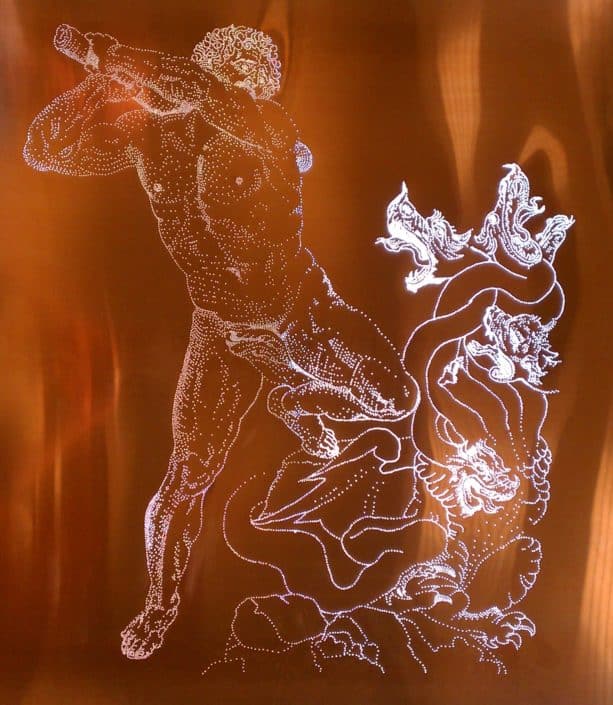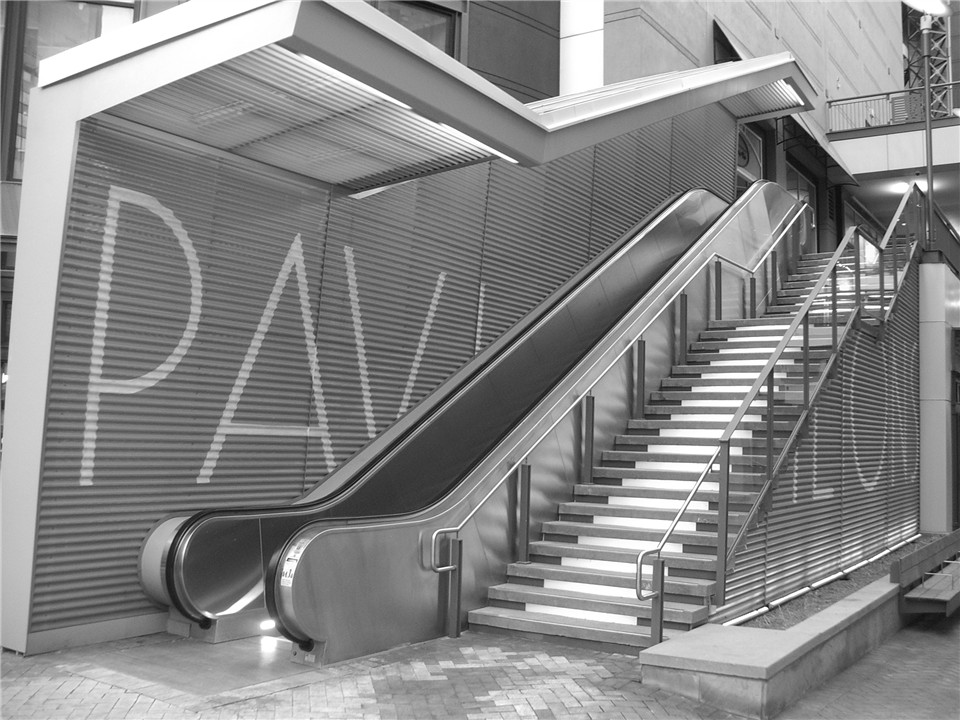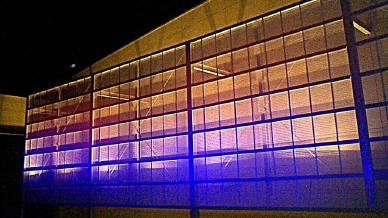PERFORATED METAL PANELS – DENVER, COLORADO
Perforated Metal Panels – The “Hole” Story
Perforated metal panels come in a wide variety of patterns and configurations. We make them out of Steel, Stainless Steel, and Aluminum and use them for a variety of reasons. Some examples include visual inspection, free air movement, sound absorption, light diffusion, or simply architectural preference. Corrugated perforated panels can create stunning visual & lighting effects, making your building pop with excitement.
Let’s set the record straight on all the jargon. Perforation 101.
Typically, most perforated metal patterns state a certain hole diameter with a certain spacing that creates a % of desired free area. A typical specification might read 3/16″ holes at 1/4″ O.C. Staggered or 51% open area. What does all that mean?
- 3/16″ = The diameter of the holes
- 1/4″ O.C. = The spacing of the holes center to center
- Staggered means that each row of perforations is not in line with the adjacent row. Staggered patterns occur at typically 60° and 45° angles.
- Open area refers to the % of area removed by the perforation process in relation to the entire sheet. This is commonly used in calculations for ventilation or if air needs to pass through the sheet.
Although it is most economical to use a standard pattern of perforated sheet off the shelf, H&H does also perform custom perforation by means of laser cutting or CNC routing. We can create effects within the perforation style to include designs, logos, and patterns that are graduated in nature.
Design Considerations
Material Type & Finishes
Material Type & Finishes available on perforated panels
Often the best choices in architectural applications are not necessarily the least expensive product. Before you choose the base metal of the perforation, consider the ultimate finish of the panel. If the perforated metal panels are exterior, consider aluminum or stainless steel as best options to prevent rust. For interior panels, steel is an economical choice.
Perforating metal panels is an extremely greasy process. We are witness of pallets of perforated metal oozing with grease/oil from the punching process. For this reason sheets in architectural applications must include a de-greasing operation prior to any finishing process.
For projects where perforated metal panels are painted, we suggest a powder coating. It is imperative that both sides of the sheet are painted, regardless of if only one side is visible. If only one side of the perforated panel is painted, then read through will show in the edges of the perforations, and it will not look good. This is often a corner that is cut, and ultimately regretted by designers and contractors. Trust that H&H Metals has the experience and knowledge to help you select the proper material and finish.
Thickness
Thickness of perforated panel
As a general rule, thinner materials perforate easier and faster. This makes the material processing is less expensive. On the flip side thinner materials also can bow and become affected negatively by heat in finishing operations such as an oven baked powder coating. Consult H&H Metals on the correct thickness for your perforated metal panels.
Hole Size
Hole Size in perforated panels
A rule of thumb when fabricating sheet metal products: Do not punch a hole less than the thickness of the sheet. The same goes for perforated metal panels. Ideally, make the hole twice the thickness of the sheet.
One of the two main factors that affects visual opacity and free area is hole size. Both should be considered when selecting the proper hole size.
Another factor to consider with hole size is the possibility of holes filling in with paint in post painted applications. H&H Metals can help you identify the correct hole size for the desired outcome for your project.
Center Distance or spacing of holes
Spacing of holes in perforated panels
The second factor other than hole diameter that affects opacity and free area is center distance. Center distance controls the feed rate as which the perforated panels are produced, therefore longer center distances are less expensive to produce, but reduce the amount of opacity and free area.
Pattern Choice - Straight vs. Staggered
Pattern Choice in perforated panels – Straight vs. Staggered
By a wide margin holes dominate as the most commonly specified pattern. Slots and squares are popular as well.
Staggered patterns are usually specified as 45° or 60°. They are ideal for perforated metal panels that are bent, because consistent bend dimensions are easier to achieve.
Straight patterns are where the holes are in columns and girds in alignment. Avoid this pattern if the panel is bent, because bend tolerances cannot be held close. The actual bend tends to occur at the center of the perforated line, rather than where the tool strikes the sheet. If bending and straight patterns are both a must, make allowances for bending intolerance in both dimension and angle. Mitigate bending issues by increasing o.c. spacing of straight patterns.
Open Area
Open Area of Perforated Metal Panels
Open area for perforated metal panels is often specified for ventilation purposes. As a rule, the greater the open area, the less expensive the panel.
Another rule of thumb is to try to stay below 70% open area to keep the panel from distorting too much.
Open areas for round perforated sheets can be calculated with the following formulas: (D=Hole Diameter; C= Spacing at angle; S= Spacing in line)
- Holes per square inch = (% open area) /78.54*D²
- 60° Staggered Pattern Open Area % = D²x90.69/C²
- 45° Staggered Pattern Open Area % = D²x157.08/S²
- Open Area Straight Pattern % = D²x78.54/C²
Margins
Side Margins of Perforated Metal Panels
Consider if margins are acceptable on the top, bottom, and sides of the sheet. Often it is less expensive and safer to have sheets with margins on the side. Fabrication techniques such as bending return flanges can hide margins that are not desired.
Also, note that perforations are not straight in line! Perforated sheets by the very nature they are fabricated have patterns that wave across the length of the sheet. This makes it difficult to try to lap sheets or cut sheets right the edges. Strategies to reduce this visually are to use margins at the side of the sheets, secondary shearing operations, and utilizing smaller diameter holes and spacing.








